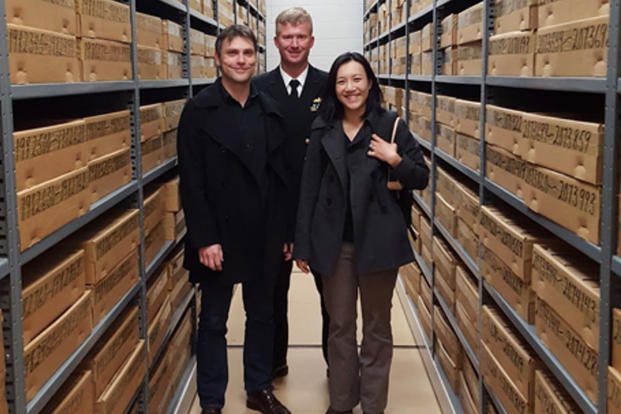
This article was originally published by ProPublica, a nonprofit newsroom that investigates abuses of power. Sign up here to get their next investigation.
In early February 2016, the security gate at a U.S. military base near Washington, D.C., swung open to admit a Navy doctor accompanying a pair of surprising visitors: two artificial intelligence scientists from Google.
In a cavernous, temperature-controlled warehouse at the Joint Pathology Center, they stood amid stacks holding the crown jewels of the center's collection: tens of millions of pathology slides containing slivers of skin, tumor biopsies and slices of organs from armed service members and veterans.
Standing with their Navy sponsor behind them, the Google scientists posed for a photograph, beaming.
Mostly unknown to the public, the trove and the staff who study it have long been regarded in pathology circles as vital national resources: Scientists used a dead soldier's specimen that was archived here to perform the first genetic sequencing of the 1918 Flu.
Google had a confidential plan to turn the collection of slides into an immense archive that — with the help of the company's burgeoning, and potentially profitable, AI business — could help create tools to aid the diagnosis and treatment of cancer and other diseases. And it would seek first, exclusive dibs to do so.
“The chief concern,” Google's liaison in the military warned the leaders…

